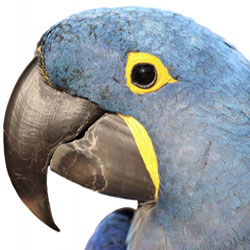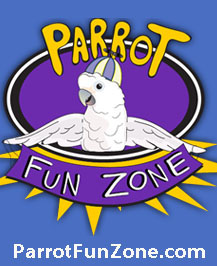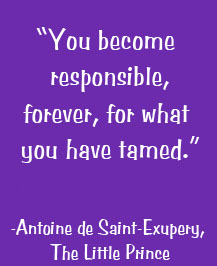Beak Bytes
 Parrots are termed hookbills due to the curved, hook-like shape of their beak. Finches and canaries with their short, straight beaks are considered softbills. The shape of a bird's beak determines the type of diet it can consume.
Parrots are termed hookbills due to the curved, hook-like shape of their beak. Finches and canaries with their short, straight beaks are considered softbills. The shape of a bird's beak determines the type of diet it can consume.
A parrot's beak is very strong as demonstrated by their ability to crack open nut shells and devour fruits with thick skins. Parrot beaks are also extremely agile in that they required to be used to delicately groom feathers. All in all, they are amazing tools. Just consider all the functions upon which a bird must rely on his beak to accomplish and you will understand how vital a tool it is to their survival:
- Eating
- Gripping
- Climbing
- Preening
- Defense
- Courtship play
- Feeding young
- Burrowing a nest
No wonder a bird's beak is often referred to as it's "third hand!" A bird's beak, just like human fingernails, is continually growing. Growth can be up to 3 inches per year depending on the bird species. If provided with adequate chewing opportunities, a healthy bird's beak will rarely require grooming.
You can help your bird maintain his beak health by providing items to encourage chewing and exercise of the beak:
- destructible chew toys
- foraging toys
- hard shell nuts
- natural perches
- lava rock
- calcium blocks or cuttlebone
- climbing toys
Additionally, items such as grooming perches with a rough abrasive surface are great for birds to be able to rub their beaks on.
Seriously overgrown beaks can inhibit a bird's ability to eat and groom themselves properly and will necessitate professional grooming. Be aware that an overgrown beak or an abnormal growth on the beak may also be a sign of disease or infection. Liver disease, vitamin D3 deficiency and trauma can all lead to abnormal growth. The underlying cause of the beak deformity will need to be investigated by your vet.
A parrot’s beak consists of many layers of keratin and there are multiple nerve endings at the tip of a parrot’s beak. Mistakes can result in very serious and painful injury and deformity. It is highly recommended that only your veterinarian trim your bird's beak, a process which involves grinding and reshaping the sides of the beak and dulling the tip.







Comments powered by CComment